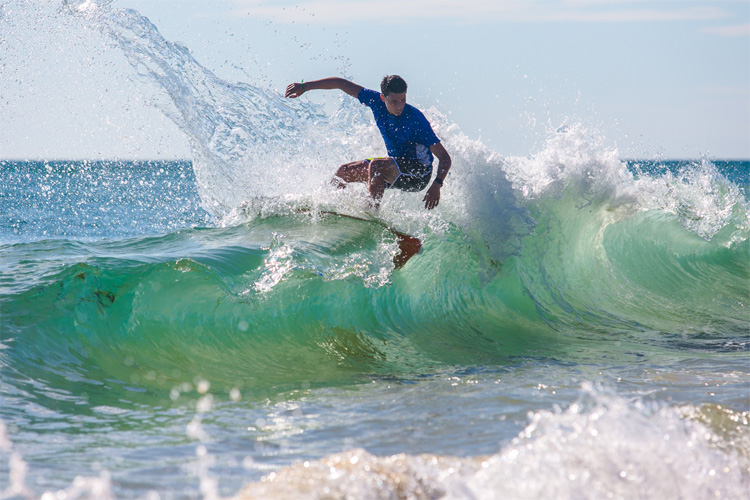Surfing is the mother and father of all wave sports. Observed and documented for the first time in the 18th century, surfing is an immovable part of human history. Credit for this link is due to two men: Samuel Wallis (1767) and James Cook (1769).
The oldest form of wave riding was common in the ancient Polynesian culture. It is possible that surfing has existed for far longer than we know.
But it hardly matters because its influence on our civilization has been tremendous.
The sport has given birth to other wave and water sports and taken a firm hold in many cultures.
Bodysurfing
Many surfers and sports history experts consider bodysurfing the purest form of surfing.
Bodysurfers often use fins to ride the wave both sideways and downward. Bodysurfing enthusiasts have developed several techniques to boost propulsion.
Windsurfing
Windsurfing came in the 20th century. Newman Darby invented the sailboard in 1948, and the Jim Drake/Hoyle Schweitzer team filed the very first windsurfing patent in 1968.
Skateboarding was invented by Californian surfers between 1940 and 1950 when the ocean was flat, and no waves were surfable.
It is the only true inland sport that was born directly out of surfing. The "ollie" maneuver was later brought into the water with the invention of aerial tricks.
Kneeboarding
Kneeboarding also comes from the California scene from around 1965. Surfers initially tried to create a board that could be used behind towboats.
Today, kneeboarding has hit the waves as an officially recognized watersport.
Wakeboarding
Similar to kneeboarding is wakeboarding, born in the 1980s.
Wakeboarders enjoy speed provided by motorboats, closed-course cables, winches, PWCs, trucks/cars, and even ATVs.
Many tricks are similar to those found in skateboarding, surfing, and windsurfing.
Skimboarding
Breaking waves are perfect for skimming. Despite the danger, skimboarders practice in extreme low and high-tide ocean conditions.
They ride thin layers of water left on the sand after a wave has pulled back away from the shore.
Their boards are light, resilient, high-density foam numbers glazed with polyester or epoxy resin.
Interestingly, skimboarding dates back to the 1920s in Laguna Beach.
Kiteboarding
Kitesurfing is one of the newest wave sports. The Legaignoux brothers developed the first kit in the 1980s.
SUP
And stand-up paddleboarding, also known as SUP, is an evolution of another Hawaiian heritage.
In the 1960s, the Beach Boys of Waikiki got on their SUPs to take photos of tourists learning to surf.
Surf Kayaking and Wave Skiing
Two other sports deserve a reference.
Surf kayaking and wave skiing are crossover sports and can deliver impressive performances out in the water and waves.
